Index
Here you can see the temperatures and settings in idle mode. When the card is in 3D mode (Quiet BIOS), the fan’s target speed is about 40% of max RPM or more precisely 2200RPM. At this setting the fan is not very loud, you can hear it, but it’s not a distraction.
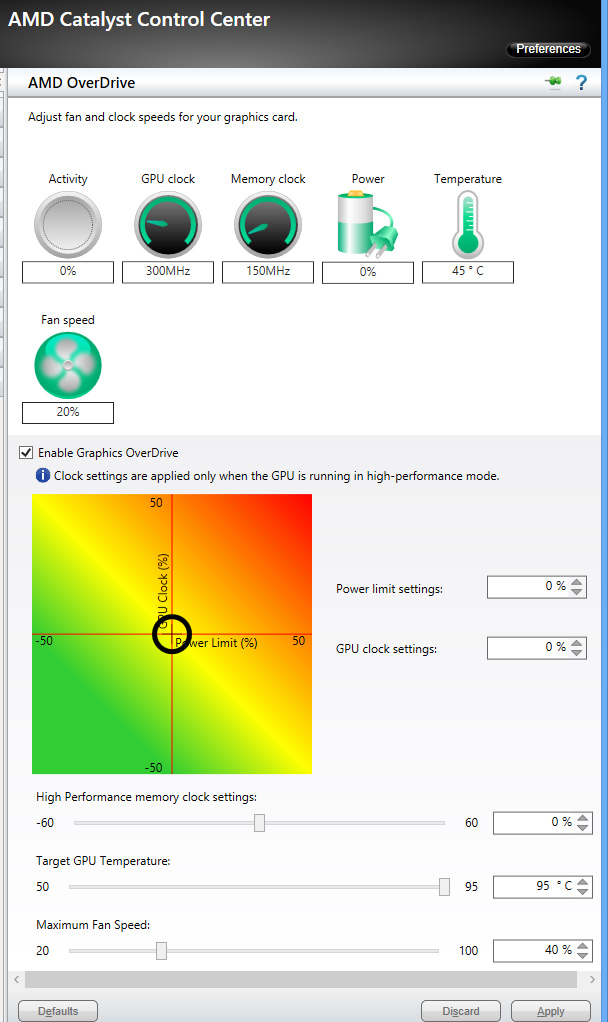
AMD insists that 95 degrees Celsius is a perfectly safe temperature and that there is no technical reason to reduce the target temperature below 95C. By running at 95C, AMD is both maximizing the performance and lowering the acoustics of the product. However, we believe that AIB partners will come up with better coolers and these cards may be the 290Xs to go for – unfortunately they are still not out, but they are coming soon.
Our tests indicate that the card’s default Quiet BIOS starts with reducing the GPU clock when the temperature hits 92C and is even more aggressive in reducing of clocks when the temperature hits 95C. After a few runs in Unigine Heaven, we saw the GPU clock drop to 865MHz.
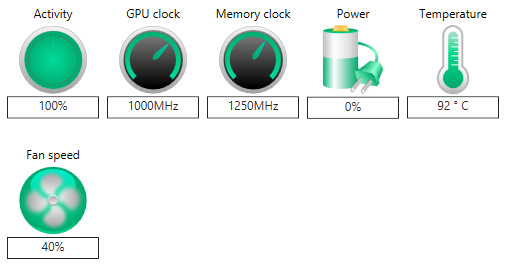
Quiet BIOS: Readings during Unigine Heaven test after 2 minutes.

Quiet BIOS: Readings during Unigine Heaven test after 3 minutes.
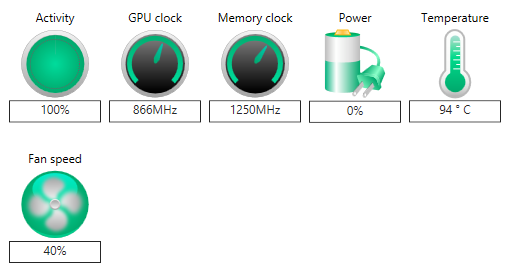
Quiet BIOS: Readings during Unigine Heaven test after 15 minutes.
It is obvious that in demanding applications the algorithm will drop the GPU clock well below 1000MHz, which will result in noticeably lower performance after an extended gaming session. The next graph shows the affect of a Crysis 3 session on the GPU clock. The first chart shows the card running the old Beta8 driver, while the second in is the current Beta9 driver. The clocked dropped down to 693MHz with the old driver, but with the Beta9 it didn’t go below 767MHz.
With the old driver, our press sample card was working at 2109 RPM maximum. Now however, with the Beta 9 driver, the fan runs a bit faster and it hits 2235 RPM. It keeps the 95 Celsius target and that didn’t change with the new driver.
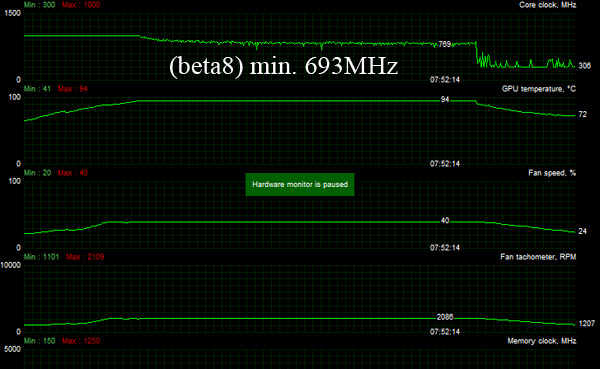
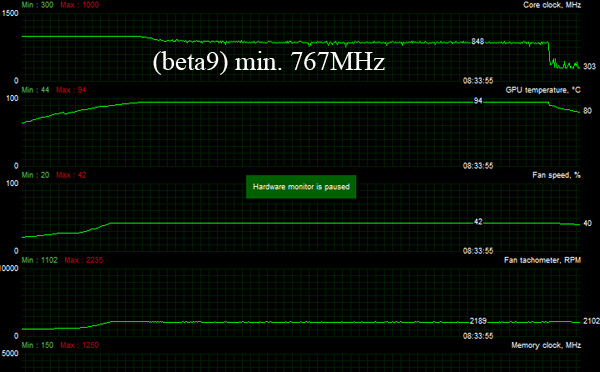
The frequency fluctuations are much less pronounced in normal Quiet BIOS mode with the new Beta 9 driver and as expected the average GPU clock is higher. Apart from that, we didn’t see much of a difference in terms of performance or operation, but we still recommend the driver update, as it turns out that some R9 290X batches are experiencing more issues with the old driver.
We can see a slight performance difference in Sleeping Dogs at 2560x1600 where we got up from 33.1 to 34.1 FPS. Despite the faster average clock speed in Crysis 3 the score in 2560x1600 resolution did not change, so we still ended up with 24.1 FPS. We are talking about normal gaming workloads and the data is recorded by Afterburner.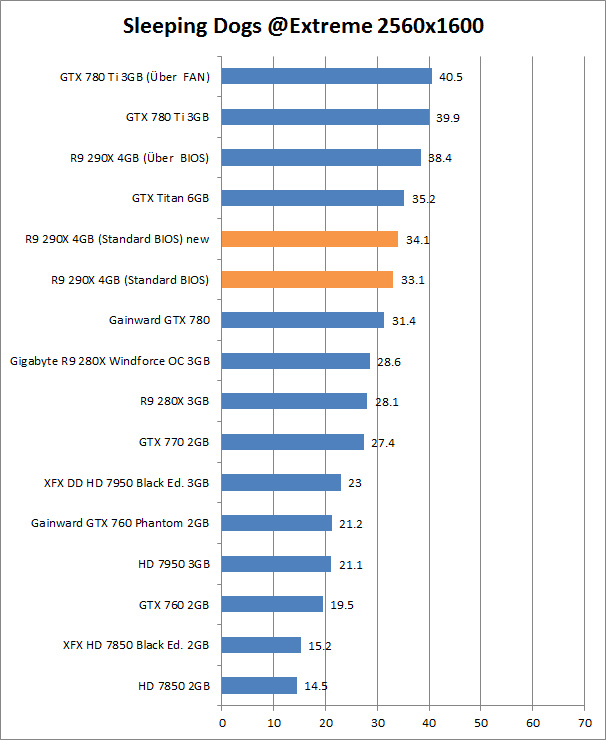
In terms of noise, the fan is a little bit louder than with the old Beta8 driver. The end result? The R9 290X with Quiet BIOS is a bit louder than the GTX 780 Ti, but the difference is not that big. However the R9 290X card tends to become a lot noisier with the Über BIOS. Über mode accelerates the fan to 55% RPM (ca. 3110 RPM), but then things get pretty loud even if you are used to plenty of noise.
AMD’s reference cooler is struggling and we’re eagerly awaiting non-reference 290X-series cards from AMD AIB partners.
